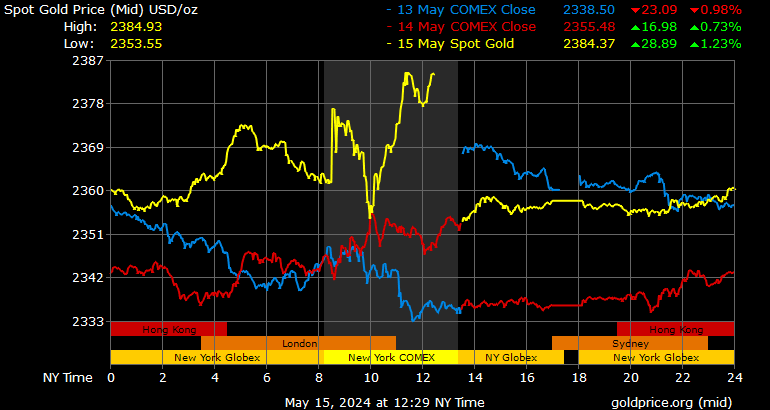Gold reserve
HISTORY OF CZECHOSLOVAK CURRENCY.
The basic goal of the monetary policy of Rašín and his successors was to achieve the union of the Czech koruna with gold and to include Czechoslovakia among the countries of the gold standard. The program of gradual changeover to the gold currency was dependent on the creation of a sufficient gold reserve of the future issuing bank. In order to speed up this process, Rašín proceeded in three ways:
- Call for the creation of a "golden treasure of the republic" through voluntary donations. The post-war patriotic enthusiasm was appropriately used. Although, for example, 94,520 gold coins and medals or 65 kg of pure gold were collected in fractions, the result was more psychological-political than monetary and did not play a role in the gold reserve in terms of quantity.
- Issuance of an internal currency loan by a law of 25 February 1919, by which the government was authorized to issue a four percent loan in gold and in currencies. It met with unexpected success (3260 kg of pure gold, 270025 kg of silver, etc.). It was repaid by 1926, with creditors routinely demanding repayment in korunas.
- Announcement of the tender obligation for currencies and foreign exchange and a ban on the export of gold coins and unprocessed gold and silver.
Only the stabilization of monetary developments in the second half of the 1920s, with a balanced state budget and a balance of payments, made it possible to unite the Czechoslovak koruna with gold, and thus to become one of the states of the gold standard. However, the direct convertibility of banknotes into gold coins has not been introduced. It was about convertibility into foreign exchange, which were associated with gold. The koruna became the currency of gold foreign exchange.
- Call for the creation of a "golden treasure of the republic" through voluntary donations. The post-war patriotic enthusiasm was appropriately used. Although, for example, 94,520 gold coins and medals or 65 kg of pure gold were collected in fractions, the result was more psychological-political than monetary and did not play a role in the gold reserve in terms of quantity.
- Issuance of an internal currency loan by a law of 25 February 1919, by which the government was authorized to issue a four percent loan in gold and in currencies. It met with unexpected success (3260 kg of pure gold, 270025 kg of silver, etc.). It was repaid by 1926, with creditors routinely demanding repayment in korunas.
- Announcement of the tender obligation for currencies and foreign exchange and a ban on the export of gold coins and unprocessed gold and silver.
Only the stabilization of monetary developments in the second half of the 1920s, with a balanced state budget and a balance of payments, made it possible to unite the Czechoslovak koruna with gold, and thus to become one of the states of the gold standard. However, the direct convertibility of banknotes into gold coins has not been introduced. It was about convertibility into foreign exchange, which were associated with gold. The koruna became the currency of gold foreign exchange.
CONTENT
- Origin of the Czechoslovak currency.
- Monetary stabilization.
- Establishment of the central bank.
- National Bank of Czechoslovakia.
- Gold reserve.
- Economic boom.
- Depression.
- The main activities of banks.
- Development of the national economy.
- Art designs.
- Czech banking system.
- The disintegration of Czechoslovakia.
- German occupation of the Czech lands.
- Currency damage caused by the occupation.
- Preparation of post-war monetary policy.
- Inflation and monetary chaos.
- Organization of monetary relations.
- Socialization of finance.
- February 1948 and central management.
- Directive management of monetary relations.
- Monetary reform of 1953.
- Central plan.
- Isolation.
- Reform efforts.
- "Standardization".
- Economic problems.
- Economic transformation.
- Changes in monetary policy management.
- Development of the koruna exchange rate.
- Development of the banking system.
- Development in 1990-1992.
- Division of the Czechoslovak Socialist Republic.
- Origin of the Czech koruna.
- Monetary policy management.
- International cooperation.
- Monetary stabilization.
- Establishment of the central bank.
- National Bank of Czechoslovakia.
- Gold reserve.
- Economic boom.
- Depression.
- The main activities of banks.
- Development of the national economy.
- Art designs.
- Czech banking system.
- The disintegration of Czechoslovakia.
- German occupation of the Czech lands.
- Currency damage caused by the occupation.
- Preparation of post-war monetary policy.
- Inflation and monetary chaos.
- Organization of monetary relations.
- Socialization of finance.
- February 1948 and central management.
- Directive management of monetary relations.
- Monetary reform of 1953.
- Central plan.
- Isolation.
- Reform efforts.
- "Standardization".
- Economic problems.
- Economic transformation.
- Changes in monetary policy management.
- Development of the koruna exchange rate.
- Development of the banking system.
- Development in 1990-1992.
- Division of the Czechoslovak Socialist Republic.
- Origin of the Czech koruna.
- Monetary policy management.
- International cooperation.
JÁ  ZLATE-SLITKY .CZ
ZLATE-SLITKY .CZ
